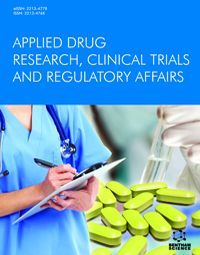Abstract
Background: Improper drug usages expose patients to drug-related problems (DRPs) and can be the cause of patient morbidity and even mortality, especially frequent in hospitalized patients and pediatric groups.
Objective: The objective of the present study was to identify and assess the drug-related problems in the pediatric department of tertiary care hospitals.
Methods: The cross-sectional, observational study was carried out for six months included pediatric in-patients of age ≤15 years of either gender in pediatric units of tertiary care hospitals of India. The enrolled pediatric patients were observed for any drug-related problem that were further recorded and classified using the DRP registration format taken from Cipolle et al. The assessment of therapy was done by using positional statements from standard organizations and guidelines. Main outcome measure: Incidences of drug-related problems and their assessment and root cause analysis.
Results: A total of 970 DRPs were identified in 296 patients, with an overall incidence of 49.3%. The incidence of DRPs was maximum in the age group of 2-12 years of children (51.2%). Patients who took six or more drugs were around eight (OR:8.41, 95% CI: 5.22 to 13.55) times more likely to have DRPs compared to those patients who took less than six drugs. The incidences of DRPs were more in patients who were hospitalized for ≥ 7 days.
Conclusion: The present study revealed significantly higher incidences of DRPs in hospitalized pediatric patients necessitating the involvement of clinical pharmacists in the pediatric department of tertiary care hospitals.
Keywords: Drug-related problems, pediatrics, hospitalized patients, clinical pharmacist, adverse drug reaction, Indian territory
Graphical Abstract
[http://dx.doi.org/10.1016/j.vhri.2018.07.002] [PMID: 30195236]
[http://dx.doi.org/10.1007/s13181-018-0684-2] [PMID: 30353414]
[http://dx.doi.org/10.1093/ajhp/54.5.554] [PMID: 9066865]
[http://dx.doi.org/10.2165/00002018-200022040-00005] [PMID: 10789826]
[http://dx.doi.org/10.1007/s11096-019-00922-3] [PMID: 31654364]
[http://dx.doi.org/10.1007/s11096-017-0504-9] [PMID: 28689305]
[http://dx.doi.org/10.1371/journal.pone.0182327] [PMID: 28763499]
[http://dx.doi.org/10.1038/s41598-018-20868-2] [PMID: 29416072]
[http://dx.doi.org/10.1186/s12887-019-1499-2] [PMID: 31027487]
[http://dx.doi.org/10.2147/DHPS.S220081] [PMID: 31819660]
[http://dx.doi.org/10.1007/s11096-012-9740-1] [PMID: 23263797]
[http://dx.doi.org/10.4103/jpbs.JPBS_35_18] [PMID: 31619914]
[http://dx.doi.org/10.1177/106002809002401114] [PMID: 2275235]
[http://dx.doi.org/10.1111/bcp.12270] [PMID: 24868576]
[http://dx.doi.org/10.1590/S1984-82502009000200018]
[http://dx.doi.org/10.1007/s00228-004-0830-4] [PMID: 15568140]
[http://dx.doi.org/10.4103/2279-042X.132702] [PMID: 24991628]
[http://dx.doi.org/10.1097/00000542-198209000-00009] [PMID: 7114542]
[http://dx.doi.org/10.5863/1551-6776-19.4.262] [PMID: 25762871]
[http://dx.doi.org/10.1001/jama.1997.03540280039031] [PMID: 9002492]
[http://dx.doi.org/10.18433/J35C7Z] [PMID: 20067703]
[http://dx.doi.org/10.1007/s40801-017-0108-7] [PMID: 28527149]
[http://dx.doi.org/10.1186/s40360-017-0157-2] [PMID: 28655357]
[http://dx.doi.org/10.1016/j.rppede.2016.04.001] [PMID: 27578187]
[http://dx.doi.org/10.1007/s00228-012-1302-x] [PMID: 22644343]
[http://dx.doi.org/10.7860/JCDR/2016/16284.7273] [PMID: 27042480]
[http://dx.doi.org/10.2147/IPRP.S231286] [PMID: 32021833]










